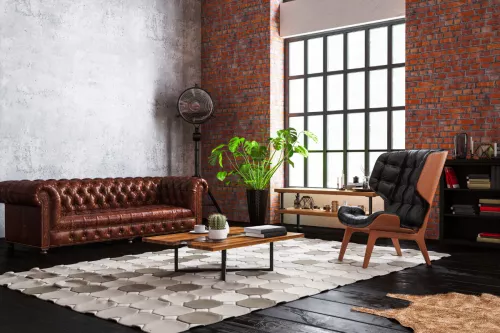The phrase, derived from the French for "foot on the ground", and it’s pronounced “pea-ay-dah-tare” has its beginnings in an equestrian practice. In times gone by, French soldiers would "mettre un pied à terre" or dismount from their horses at day's end, seeking refuge in temporary accommodations.
This practice of finding interim lodging while on the move gradually came to be known by the abbreviated term pied-à-terre in the 1700s, marking its evolution into a term denoting temporary living spaces.
Fast forward to contemporary times, the concept of the pied-à-terre has transcended its modest origins, transforming into a symbol of elegance, functionality, and global sophistication within the real estate sector. Today's pied-à-terre is typically a secondary residence, strategically positioned within the urban fabric, offering inhabitants a convenient and luxurious haven within the hustle of city life.
These dwellings are not merely places to stay; they are gateways to the vibrant cultural, social, and professional landscapes of the world's metropolises, blending the historical essence of a "foot on the ground" with the modern allure of urban sophistication.
This fusion of history and contemporary luxury underscores the pied-à-terre's enduring appeal, making it a coveted retreat for those seeking a blend of convenience, investment potential, and a touch of historical charm in their lives.
Understanding Pieds-à-Terre
In practical terms, a pied-à-terre serves as a secondary residence, utilized temporarily to establish a foothold in a different urban area. Unlike the conventional vacation home, which may be situated in more remote or resort-like destinations, a pied-à-terre is characteristically found within the heart of metropolitan areas.
This type of secondary residence is particularly appealing to those residing in suburban or rural locales who seek a convenient city base to accommodate work duties, leisure activities, or social engagements.
This prime urban positioning ensures that residents have seamless access to the rich tapestry of cultural, social, and professional opportunities that only city life can offer, making the pied-à-terre not just a place to stay, but a gateway to an enhanced urban experience.
Characteristics of a Pied-à-Terre
Typically, a pied-à-terre is a compact studio apartment situated within a high-end or service-oriented building, providing round-the-clock amenities akin to those found in hotels. Size-wise, they tend to be smaller than primary residences, making them more affordable and manageable as a second home.
Their prime locations afford owners the convenience of being close to business districts, entertainment, dining, and cultural venues.
Synonyms and Similar Concepts
While "pied-à-terre" is the term most commonly used, synonyms like "secondary residence" or "city apartment" capture the essence of these urban retreats. However, the term "pied-à-terre" carries a certain cachet, often implying not just functionality but also a degree of luxury and exclusivity.
The Rationale for Investing in a Pied-à-Terre
Numerous motivations exist for purchasing a pied-à-terre, spanning from personal enjoyment to professional needs. Affluent individuals often acquire them for frequent visits to major cities like New York, San Francisco, London, or Paris, indulging in the local shopping, dining, and nightlife.
Business professionals might invest in a pied-à-terre in cities where they regularly conduct business, while international buyers may seek a semi-permanent abode in some of the world's most prestigious urban centers. Additionally, some owners have family connections in the city, such as a child attending university, prompting regular visits.
Others use a pied-à-terre to reduce the time spent commuting from their main residence to their workplace. In these scenarios, owning a pied-à-terre can offer more convenience and potentially greater cost-effectiveness than repeatedly booking hotel stays.
It eliminates the inconveniences of reservations, check-ins, and constant packing, while providing the comforts and facilities of a personal residence, including a kitchen to save on dining out.
Pieds-à-Terre in Co-ops and Condos
Pieds-à-terre are commonly found in cooperative (co-op) and condominium (condo) buildings. Co-ops, prevalent in cities like New York, often have strict rules regarding pieds-à-terre, with some buildings prohibiting them altogether due to concerns about transient occupancy and community stability.
Conversely, condominiums often present a simpler route for acquiring a pied-à-terre, as they usually don't necessitate any special permissions for such use. The buying process in condo developments tends to be more straightforward, with the primary requirement for purchasers being the provision of proof of their financial stability, irrespective of whether they plan to occupy the unit full-time or not.
Controversies Surrounding Pieds-à-Terre
Pieds-à-terre, whether located in NYC or elsewhere, have not been universally welcomed, facing criticism for attracting a surge of foreign buyers, escalating housing prices, and lacking contributions to local tax revenues. Discussions around imposing special pied-à-terre taxes have emerged as a potential countermeasure, though the implementation of such taxes is still uncertain.
This issue adds a layer of complexity for those considering a pied-à-terre in NYC or similar urban centers. Despite their undeniable charm, these secondary residences are at the center of debates over their impact on housing affordability and market dynamics, with some municipalities exploring or enacting additional levies to address the challenges they pose to the fabric of urban communities.
People also ask
What are some common amenities for pieds-à-terre?
Among the most favored amenities by both owners and prospective buyers are a prime location, captivating views, and convenient access to public transport. Additionally, pet-friendly policies, concierge services, and a comprehensive staff including doormen, maintenance, and housekeeping are greatly valued.
The availability of common spaces, along with wellness facilities like gyms and spas, also contribute to the quality of life. While not all amenities may be essential to every buyer—for example, not everyone has a pet or requires concierge services—they represent important factors to bear in mind during the selection process.
Can pieds-à-terre be rented out?
Owners of a pied-à-terre, particularly in co-ops, usually face restrictions on subletting, often being required to lease their units for a minimum of one year, with short-term vacation rentals typically prohibited.
Co-ops may also limit sublet durations to one or two years within a five-to-seven-year window, and owners might need to wait between one and three years before they can sublet. Although many pied-à-terre owners don't intend to rent out their spaces, understanding the subletting rules is important, as regulations are commonly in place.

 Marcio Vasconcelos
Marcio Vasconcelos





